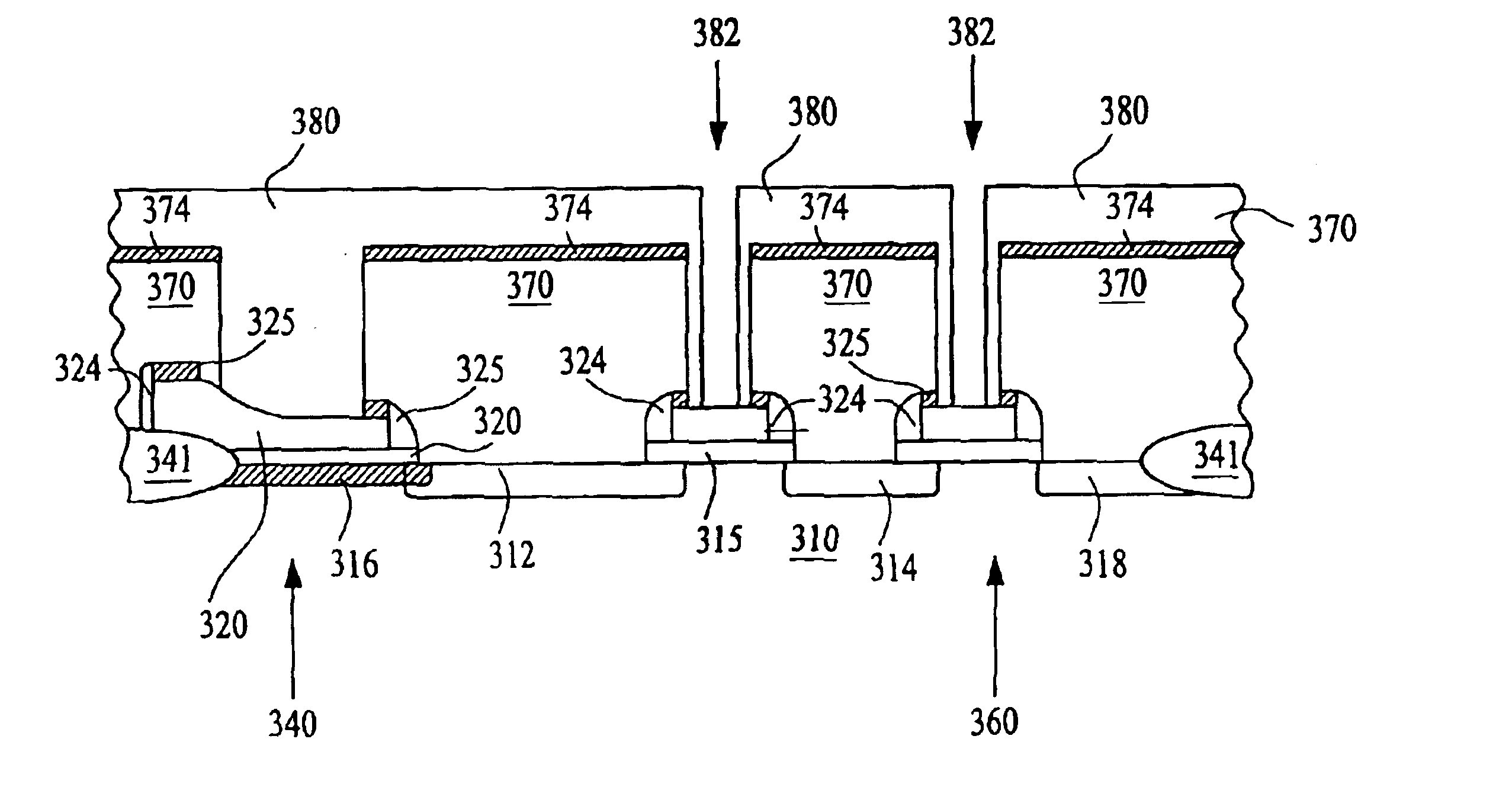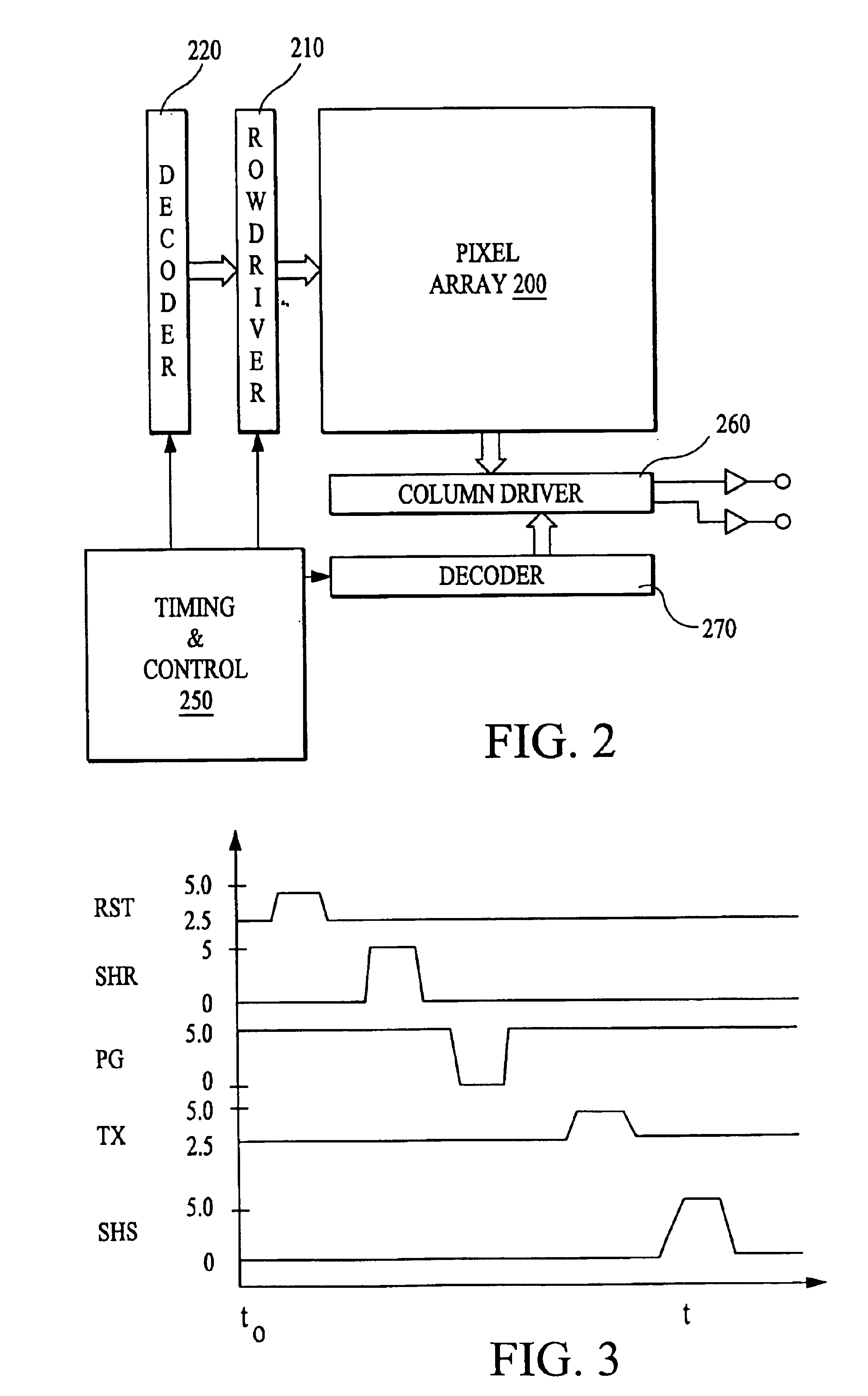CMOS imager with selectively silicided gate
a gate and selective technology, applied in the field of improved semiconductor imaging devices, can solve the problems of high power dissipation of large arrays, ccd imagers also suffer from a number, and are susceptible to radiation damage, so as to improve the speed of transistor gates, prevent blockage of photogates, and more conductive layers
- Summary
- Abstract
- Description
- Claims
- Application Information
AI Technical Summary
Benefits of technology
Problems solved by technology
Method used
Image
Examples
first embodiment
[0049]For the pixel cell of the first embodiment, the photosensor cell is essentially complete at this stage, and conventional processing methods may then be used to form contacts and wiring to connect gate lines and other connections in the pixel cell. For example, the entire surface may then be covered with a passivation layer of, e.g., silicon dioxide, BPSG, PSG, BSG or the like which is CMP planarized and etched to provide contact holes, which are then metallized to provide contacts to the photogate, reset gate, and transfer gate. Conventional multiple layers of conductors and insulators may also be used to interconnect the structures in the manner shown in FIG. 1.
second embodiment
[0050]Reference is now made to FIG. 7. This figure shows a partially cut away side view of a portion of a semiconductor CMOS imager wafer in an interim stage of processing according to the present invention. The imager includes a p-well substrate 310 having n-doped region 316 therein for photocollection. An insulating layer 315 is formed over the substrate 310. The insulating layer is preferably a silicon dioxide grown on the substrate 310 by conventional means such as thermal oxidation of silicon. The substrate 310 has field oxide regions 341 formed to surround and isolate the cells which may be formed by thermal oxidation of silicon using the LOCOS process. While the invention is described with reference to field oxide regions 341, it should be understood that the field oxide regions may be replaced with shallow trench isolation (STI). A doped polysilicon layer 320 may be formed by conventional methods, such as chemical vapor deposition (CVD) over the insulating layer 315. A photo...
third embodiment
[0059]For the pixel cell of the third embodiment, the photosensor cell is essentially complete at this stage, and conventional processing methods may then be used to form contacts and wiring to connect gate lines and other connections in the pixel cell. For example, the entire surface may then be covered with a passivation layer of, e.g., silicon dioxide, BPSG, PSG, BSG or the Like which is CMP planarized and etched to provide contact holes, which are then metallized to provide contacts to the photogate, reset gate, and transfer gate. Conventional multiple layers of conductors and insulators may also be used to interconnect the structures in the manner shown in FIG. 1.
[0060]Reference is now made to FIG. 15. This figure shows a partially cut away side view of a portion of a semiconductor CMOS imager wafer in an interim stage of processing according to a third embodiment of the present invention. The imager includes a substrate 310 preferably doped to a first conductivity type. For ex...
PUM
 Login to View More
Login to View More Abstract
Description
Claims
Application Information
 Login to View More
Login to View More - R&D
- Intellectual Property
- Life Sciences
- Materials
- Tech Scout
- Unparalleled Data Quality
- Higher Quality Content
- 60% Fewer Hallucinations
Browse by: Latest US Patents, China's latest patents, Technical Efficacy Thesaurus, Application Domain, Technology Topic, Popular Technical Reports.
© 2025 PatSnap. All rights reserved.Legal|Privacy policy|Modern Slavery Act Transparency Statement|Sitemap|About US| Contact US: help@patsnap.com



